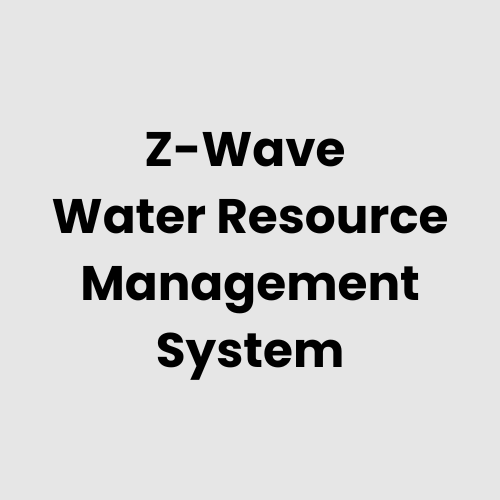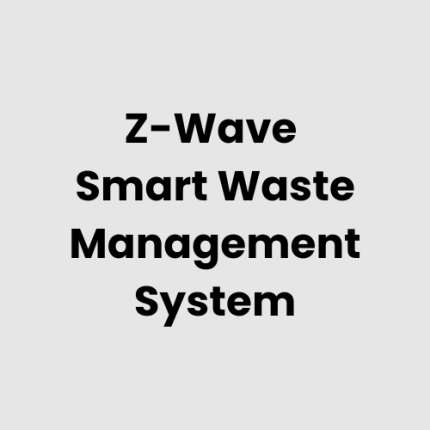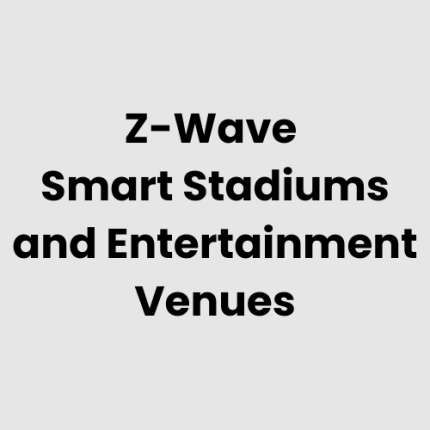Description
Technical Architecture of Z-Wave Enabled Water Resource Management System
The Z-Wave Enabled Water Resource Management system utilizes a decentralized IoT architecture with Z-Wave-enabled devices to manage water resources efficiently. This system includes sensors for monitoring water usage, leakage detection, pressure, flow rates, and water quality, all connected through a Z-Wave gateway. The data collected is processed locally or in the cloud, providing real-time monitoring and analytics. The architecture supports integration with SCADA systems and can be customized to suit various water management needs.
List of Hardware for Z-Wave Enabled Water Resource Management System
- Z-Wave Smart Water Meters: For real-time water usage monitoring.
- Leak Detectors: To identify water leakage in pipelines and distribution systems.
- Flow Sensors: Measure the flow of water through pipes for accurate data collection.
- Pressure Sensors: Monitor water pressure levels to ensure safe and optimal system performance.
- Water Quality Sensors: Measure parameters like pH, turbidity, and temperature of the water.
- Z-Wave Gateways: Provide communication between Z-Wave devices and local or cloud servers.
- Smart Valves: Automated valve controls for water distribution management.
- Z-Wave-enabled Control Panels: Interface for system operators to view data and control devices remotely.
Physical Placement Considerations of the Hardware
- Water Meters: Should be installed at key points in the water distribution network, including residential, commercial, or industrial meters. Proper calibration and maintenance access points are critical.
- Leak Detectors: These devices should be strategically placed along high-risk water pipes, particularly in underground systems or flood-prone areas, ensuring early detection of leaks.
- Flow Sensors: Best placed at the entry points and exits of major water lines, ensuring accurate measurements of water flow for demand forecasting and resource allocation.
- Pressure Sensors: Installed at different points in the pipeline network to monitor pressure fluctuations and prevent system failures due to over-pressurization.
- Water Quality Sensors: Should be positioned in locations prone to contamination, such as water sources, treatment plants, and storage facilities.
- Z-Wave Gateways: Placed in secure and centralized locations to ensure stable wireless communication with all connected devices throughout the water management infrastructure.
Hardware Architecture of Z-Wave Enabled Water Resource Management System
The hardware architecture of the Z-Wave Enabled Water Resource Management system consists of multiple sensor nodes connected to a central Z-Wave gateway. The system communicates wirelessly, ensuring ease of installation and flexibility. The sensors collect data on water usage, quality, pressure, and flow, while the gateway manages communication with local or cloud servers for data storage and analytics. The gateway also enables remote monitoring and control, making the system adaptable to various water management applications, from municipal water supplies to agricultural irrigation.
Deployment Considerations for Z-Wave Enabled Water Resource Management System
- Coverage Area: Ensure the Z-Wave network’s coverage extends across the entire water management infrastructure, from treatment plants to end-user connections, with minimal dead zones.
- Data Redundancy: Implement local servers to provide backup data storage in case of cloud service disruptions, ensuring uninterrupted operation.
- Device Placement: Carefully plan the placement of sensors and gateways to optimize signal strength and minimize interference. For remote locations, mesh network configurations can be used for better coverage.
- Power Supply: Ensure all devices have adequate power sources, considering battery-powered options for low-maintenance setups or solar-powered units for off-grid applications.
- Scalability: The system should be designed with scalability in mind, allowing for easy expansion as water management needs grow or evolve.
List of Relevant Industry Standards and Regulations
- ISO 50001 – Energy Management Systems
- ISO 14001 – Environmental Management Systems
- AWWA Standards – American Water Works Association standards
- EPA Regulations – U.S. Environmental Protection Agency guidelines for water quality and conservation
- IEC 61850 – Communication networks and systems for power utility automation (relevant to smart grid and water systems)
- ANSI C12.1 – American National Standards Institute guidelines for electrical metering
- NFPA 70E – Standard for Electrical Safety in the Workplace (relevant for sensor and system installation)
- Water Efficiency Standards – Local and regional water conservation regulations
Local Server Version for Z-Wave Enabled Water Resource Management
The local server version of the Z-Wave Enabled Water Resource Management system is designed to run on-premises for data processing and storage. This approach offers increased data security, lower latency, and reduced reliance on external cloud services. Local servers can aggregate data from multiple Z-Wave devices, perform real-time analysis, and send actionable insights to local operators. This setup is particularly beneficial in regions with unreliable internet connections or strict data privacy laws.
Cloud Integration and Data Management
The Z-Wave Enabled Water Resource Management system can be integrated with cloud platforms for enhanced data analysis, remote access, and scalability. Cloud integration allows for centralized data storage and analytics, enabling water utilities to access historical trends, conduct predictive maintenance, and generate reports from anywhere. Data management practices ensure data privacy, integrity, and compliance with industry standards. Cloud platforms enable advanced analytics, AI-powered insights, and the ability to scale the system effortlessly, accommodating large datasets from various geographic locations. Additionally, automated updates and software patches can be managed remotely to keep the system up-to-date.
At GAO Tek, we specialize in providing advanced IoT solutions, including the Z-Wave Enabled Water Resource Management system. We can help you implement a customized solution that fits your water management needs, providing real-time data, automated controls, and valuable insights for efficient resource usage. With our expertise and cutting-edge technologies, we support industries in achieving smarter, more sustainable water management practices.
GAO Case Studies
United States
- New York City, NY
A large urban water utility implemented a Z-Wave-enabled water resource management system to optimize water usage and reduce waste. Smart meters and sensors were deployed across various districts, allowing for real-time monitoring of water consumption and early detection of leaks, helping the city save on operational costs and improve water conservation. - Los Angeles, CA
In Los Angeles, a major irrigation project used Z-Wave technology to remotely monitor water flow and pressure across the city’s vast irrigation systems. This system reduced water wastage, provided detailed analytics on consumption patterns, and enabled timely maintenance for water distribution systems, ultimately helping to maintain efficient water usage in the drought-prone area. - Chicago, IL
A regional water treatment facility in Chicago employed a Z-Wave-powered system manage water quality, flow, and pressure in real time. By integrating these sensors with cloud-based analytics, the facility was able to significantly reduce operational downtime and improve response times to water quality issues, ensuring that safe water was continuously provided to residents. - Miami, FL
In Miami, the local municipality installed Z-Wave-enabled smart water meters throughout residential and commercial areas. These meters sent usage data directly to the cloud, allowing city managers to optimize water distribution and reduce unnecessary consumption during peak hours. This initiative greatly improved the city’s overall water conservation efforts. - Houston, TX
A major utility in Houston deployed Z-Wave-enabled water management solutions to monitor pressure and flow within the city’s water distribution network. The system provided actionable insights into system performance and helped optimize maintenance schedules, ultimately improving service reliability and reducing customer complaints related to water supply issues. - Seattle, WA
The City of Seattle integrated Z-Wave smart water meters to monitor water consumption across thousands of properties. The system’s ability to collect granular data on usage patterns enabled more accurate billing and informed conservation efforts, aligning with the city’s environmental goals to reduce water waste. - San Francisco, CA
A significant water conservation project in San Francisco utilized Z-Wave technology to control water flow in urban irrigation systems. With the help of real-time data, the system enabled water managers to fine-tune distribution, prevent water loss, and optimize resource allocation for urban greenery and landscaping. - Dallas, TX
In Dallas, Z-Wave-enabled sensors were placed throughout the city’s water distribution network to monitor flow and pressure. The system was used to automatically shut off valves in case of high-pressure anomalies, ensuring better system control and reducing the risk of infrastructure damage, contributing to long-term cost savings. - Denver, CO
Denver adopted Z-Wave technology for its water utility system, deploying smart valves and flow meters to automate irrigation and manage water usage across the city. The smart sensors provided real-time data for maintenance scheduling and conservation efforts, leading to significant savings on water consumption. - Phoenix, AZ
A water authority in Phoenix employed a Z-Wave-based water resource management system for monitoring and controlling the flow of water in its desert region. The system enabled more efficient management of scarce water resources, ensuring optimal irrigation of public areas and better alignment with regional water availability. - Washington, D.C.
In Washington, D.C., Z-Wave technology was used to monitor water usage in commercial buildings. The system enabled building managers to track consumption patterns, identify inefficiencies, and optimize water use for both cost savings and environmental sustainability efforts within the city’s infrastructure. - Atlanta, GA
The water supply network in Atlanta incorporated Z-Wave-enabled smart meters to improve leak detection and reduce water loss across the metropolitan area. These sensors helped identify problematic areas in the pipeline system, reducing maintenance costs and enhancing the overall efficiency of water distribution. - Boston, MA
In Boston, Z-Wave technology was deployed to enable real-time water monitoring for both residential and commercial properties. The system allowed utility managers to remotely detect any irregularities or inefficiencies in water usage, preventing costly system failures and ensuring smoother operation of the city’s water infrastructure. - Minneapolis, MN
Minneapolis implemented a Z-Wave-powered water resource management system to monitor both residential and industrial water consumption. The smart sensors provided valuable data to help the city adjust its water allocation, especially in response to seasonal changes and regional water availability challenges. - Orlando, FL
A large-scale water management system in Orlando used Z-Wave-enabled sensors to manage water usage across recreational parks and urban centers. The system helped reduce water waste by enabling precise control of irrigation schedules and offering insights that contributed to the city’s overall water conservation strategy.
Canada
- Toronto, ON
In Toronto, a smart water management system using Z-Wave technology was implemented to monitor water quality, pressure, and consumption in residential and commercial buildings. The system provided actionable insights for the local water authority, allowing for improved management of resources and more effective conservation efforts. - Vancouver, BC
Vancouver adopted Z-Wave-enabled smart water meters across various neighbourhoods to improve the monitoring and management of water consumption. The solution facilitated remote data collection, offering the city valuable insights into usage patterns, which supported its ongoing efforts to reduce water waste and implement sustainable practices.
At GAO Tek Inc., we help clients integrate cutting-edge Z-Wave-enabled water management solutions, delivering smarter, more efficient water resource management systems tailored to your specific needs. With our extensive expertise and a history of supporting critical infrastructure projects across North America, we are well-positioned to help transform how cities and industries manage water for a more sustainable future.
Navigation Menu for Z-Wave
- Z- Wave Gateways/Hubs
- Z-Wave End Devices
- Z-Wave-Cloud, Server, PC& Mobile System
- Z-Wave Accessories
- Z-Wave Resources
Navigation Menu for IoT
- LORAWAN
- ZIGBEE
- Wi-Fi HaLow
- Z-WAVE
- BLE & RFID
- NB-IOT
- CELLULAR IOT
- GPS IOT
- IOT SENSORS
- EDGE COMPUTING
- IOT SYSTEMS
Our products are in stock and can be shipped anywhere in the continental U.S. or Canada from our local warehouse. For any further information, please fill out this form or email us.
We are actively looking for partners who are like us located in the U.S. and Canada. For more information on partnering with GAO, please visit Partner with GAO Tek Inc. It lists various ways to partner with GAO, such as OEM Partnerships, Technology Integration, Distribution and Reselling Opportunities, Presenting at the Leading Event Tek Summit, Joint R&D Projects, Training and Consulting Services, Industry-Specific Collaborations, Research and Academic Partnerships.



